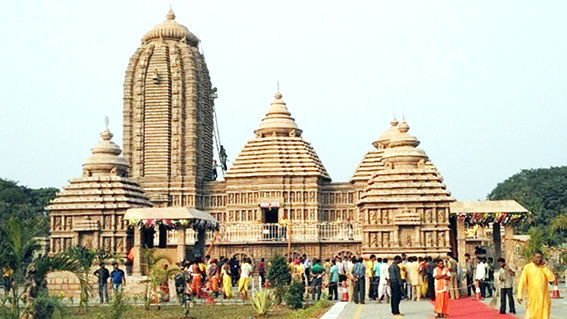Centre Withdrew Draft Heritage Bylaws on Jagannath Temple
Why in News
The Centre has withdrawn the draft heritage bylaws issued by the National Monuments Authority (NMA) for Shree Jagannath Temple in Puri, Odisha.
- The Odisha Government is demanding withdrawal of the bylaws for temples in Ekamra Kshetra area of Bhubaneswar as well.
Key Points
- Draft Heritage Bylaws:
- Background:
- The government in 2010 formed the National Monuments Authority under the Ancient Monuments and Archaeological Sites and Remains (Amendment and Validation) Act, 2010.
- NMA’s primary role was to prepare heritage bylaws for the Archaeological Survey of India (ASI) listed structures.
- The government in 2010 formed the National Monuments Authority under the Ancient Monuments and Archaeological Sites and Remains (Amendment and Validation) Act, 2010.
- Meaning:
- The Ancient Monuments and Archaeological Sites and Remains (Amendment and Validation) Act 2010 mandates that monument-specific heritage bylaws be prepared to regulate construction activity near ASI-protected monuments.
- The draft heritage bylaws need to be approved by Parliament.
- Background:
- The Case of Odisha:
- The State government considered that the byelaws would have hampered the grand infrastructure development planned around 12th century Shree Jagannath Temple in Puri.
- Similar heritage bylaws have been drafted for two temples in Bhubaneswar - the 13th century Vaishnava temple of Ananta Basudev and Shiva temple of Brahmeswar, both in the Ekamra Kshetra area.
- In 2020, the state government planned a beautification project around the area spread across 1,126 acre and develop it into a major tourist attraction.
- Jagannath Temple:

- Construction:
- It is believed to be constructed in the 12th century by King Anatavarman Chodaganga Deva of the Eastern Ganga Dynasty.
- Mythology:
- Jagannath Puri temple is called ‘Yamanika Tirtha’ where, according to the Hindu beliefs, the power of ‘Yama’, the god of death, has been nullified due to the presence of Lord Jagannath.
- Architecture:
- This temple was called the “White Pagoda” and is a part of Char Dham pilgrimages (Badrinath, Dwaraka, Puri, Rameswaram).
- There are four gates to the temple- Eastern ‘Singhdwara’ which is the main gate with two crouching lions, Southern ‘Ashwadwara’, Western 'Vyaghra Dwara and Northern ‘Hastidwara’. There is a carving of each form at each gate.
- In front of the entrance stands the Aruna stambha or sun pillar, which was originally at the Sun Temple in Konark.
- Festival: The World famous Rath Yatra (Car Festival) & Bahuda Yatra.
- Construction:
- Other Important Monuments in Odisha:
- Konark Sun Temple (UNESCO World Heritage Site).
- Tara Tarini Temple.
- Lingaraj Temple.
- Udaygiri and Khandagiri Caves.
The Ancient Monuments and Archaeological Sites and Remains (Amendment and Validation) Act, 2010
- Objective:
- To preserve, conserve, protect and maintain all ancient monuments and archaeological sites and remains declared of national importance, and their surrounding areas up to a distance of 300 meters (or more as may be specified in certain cases) in all directions.
- Provisions:
- No construction or reconstruction is permitted in the prohibited area (an area up to a distance of 100 meters in all directions from the nearest protected limit of nearby protected monument or protected area declared as of national importance), but repair or renovation is considered.
- In the regulated area (an area up to a distance of 200 meters in all directions from the prohibited area of any protected monument and protected area declared as of national importance), repair/renovation/construction/reconstruction are considered.
- All applications for construction related work in the prohibited and regulated areas are to be submitted to the Competent Authorities (CA) and then to National Monuments Authority (NMA) for consideration.
- NMA functions under the Ministry of Culture.